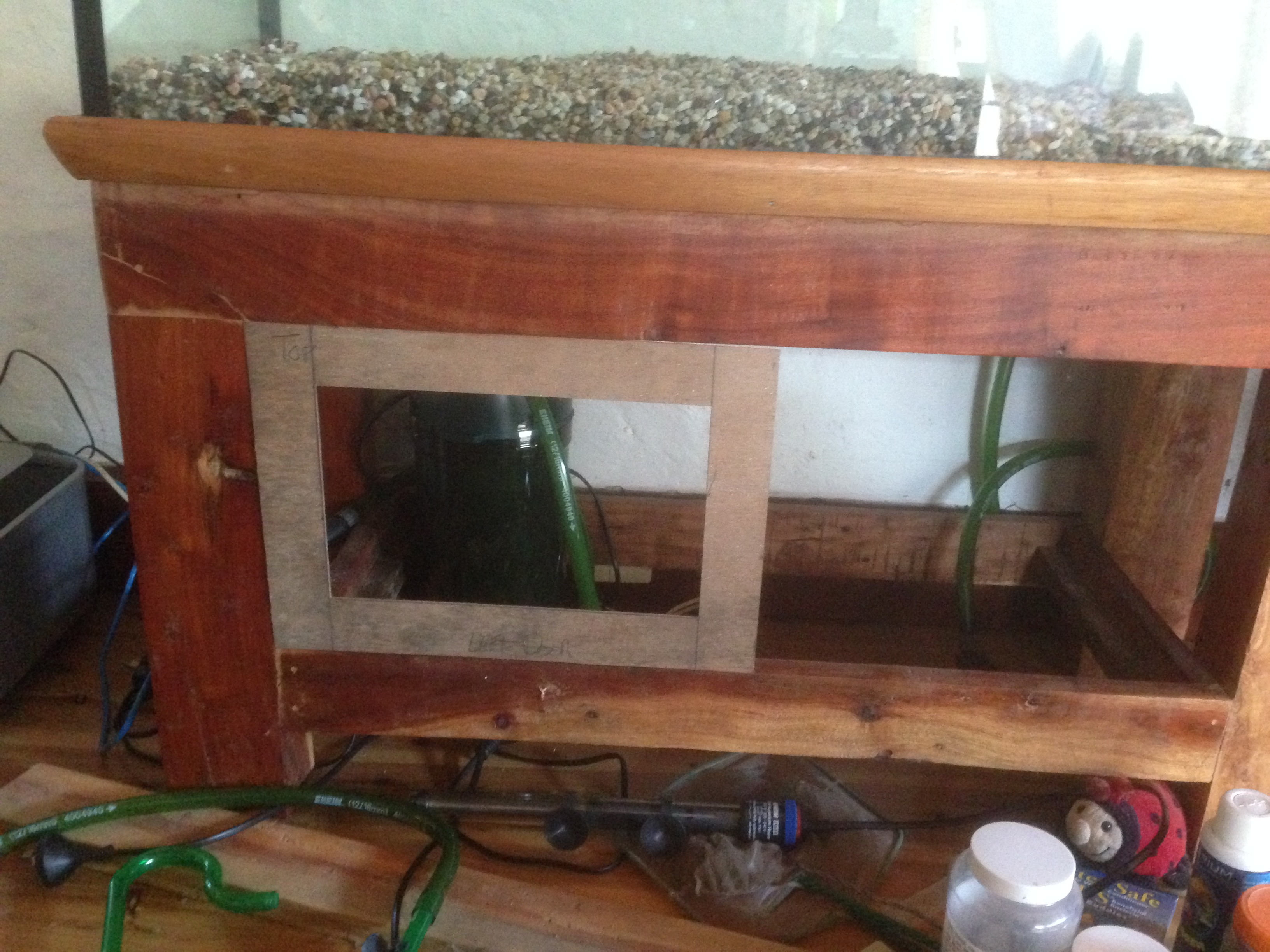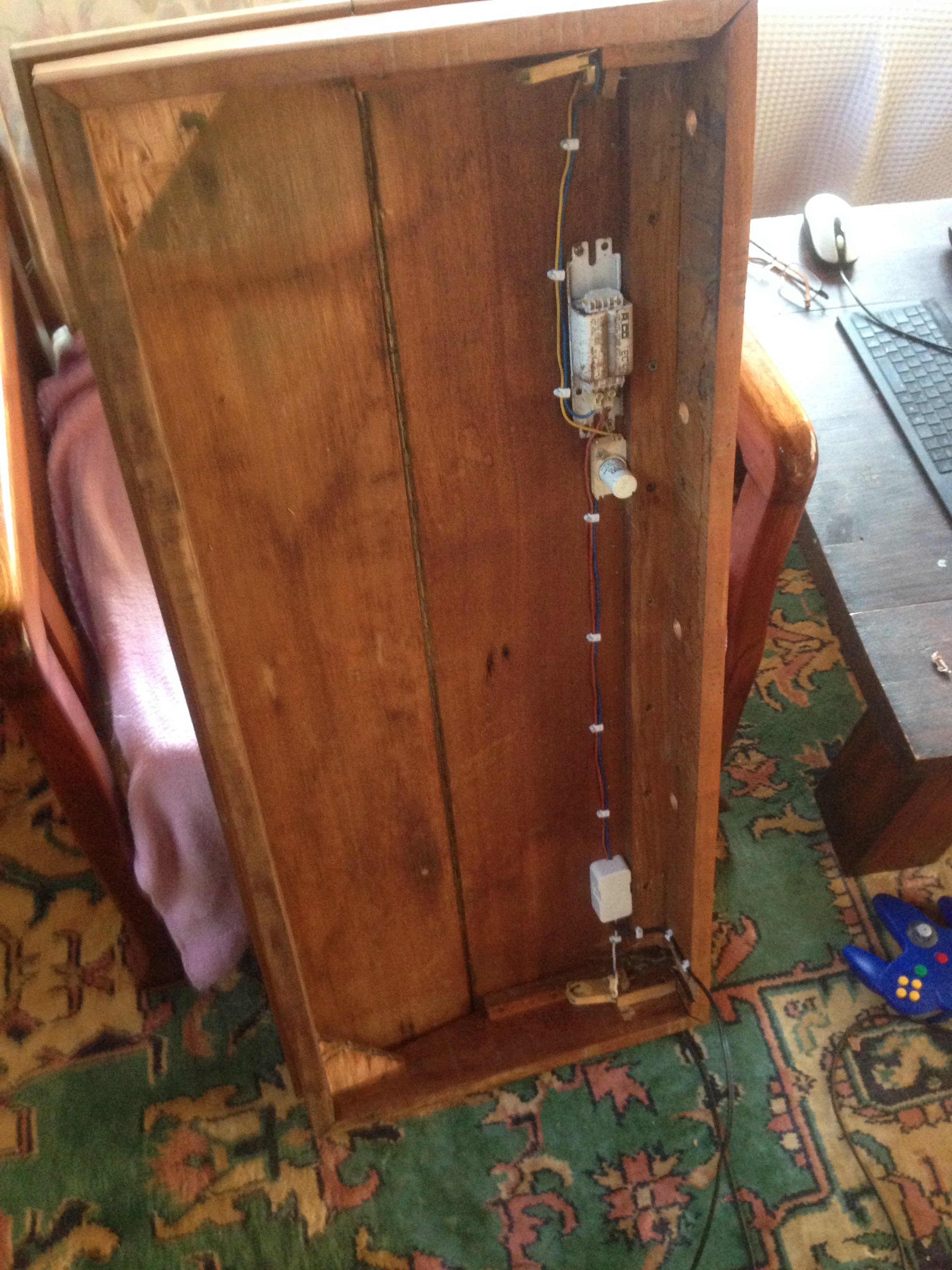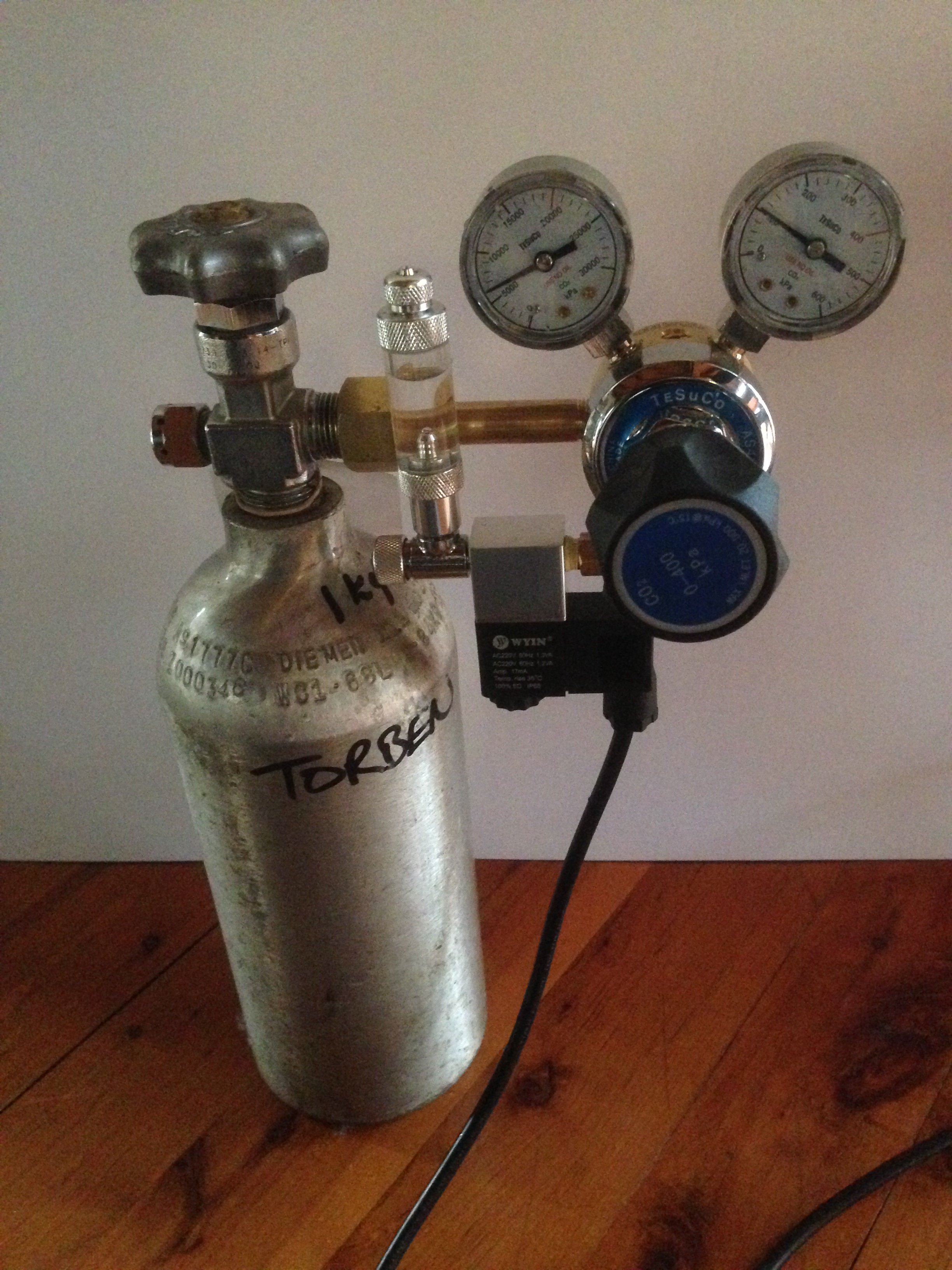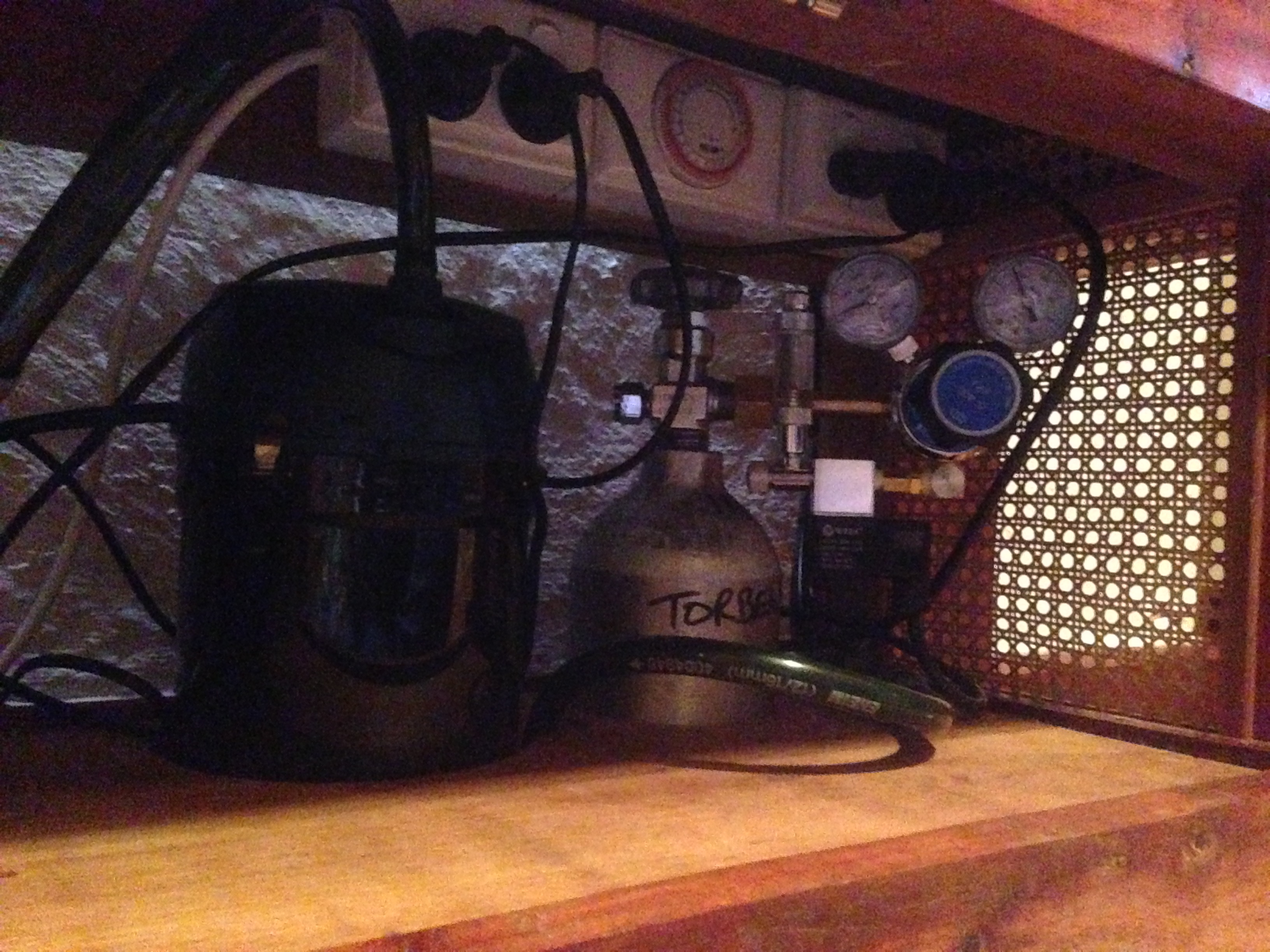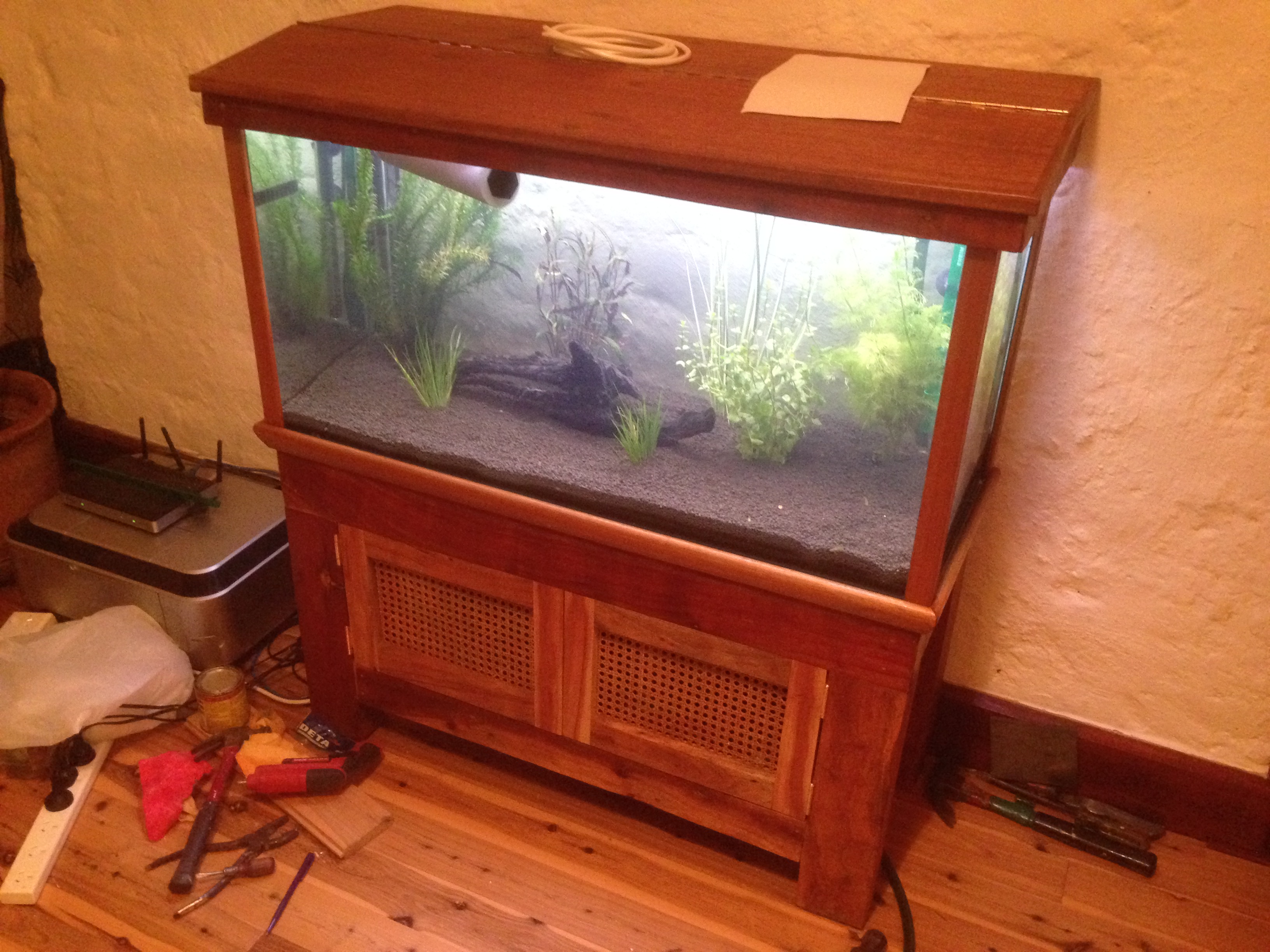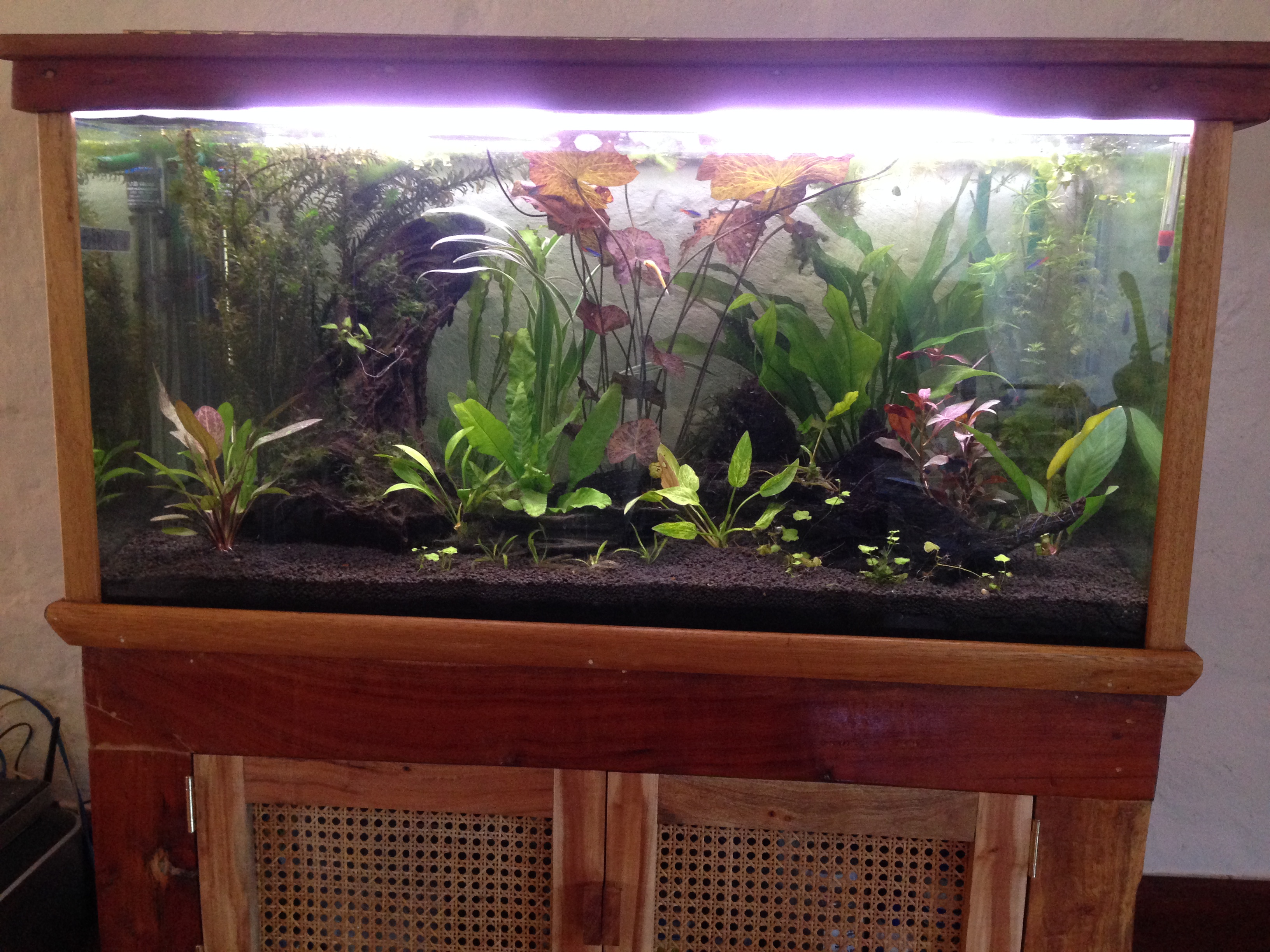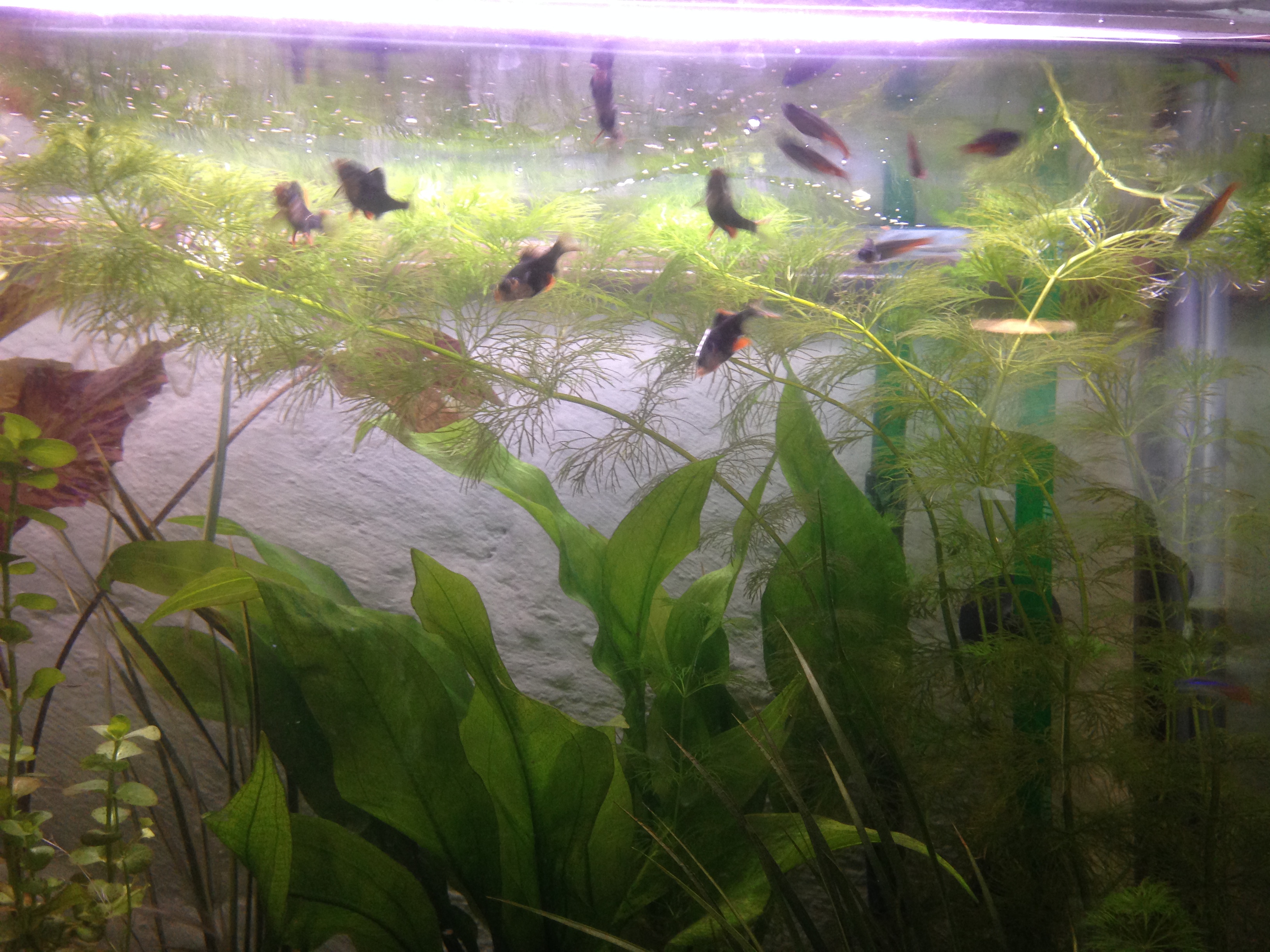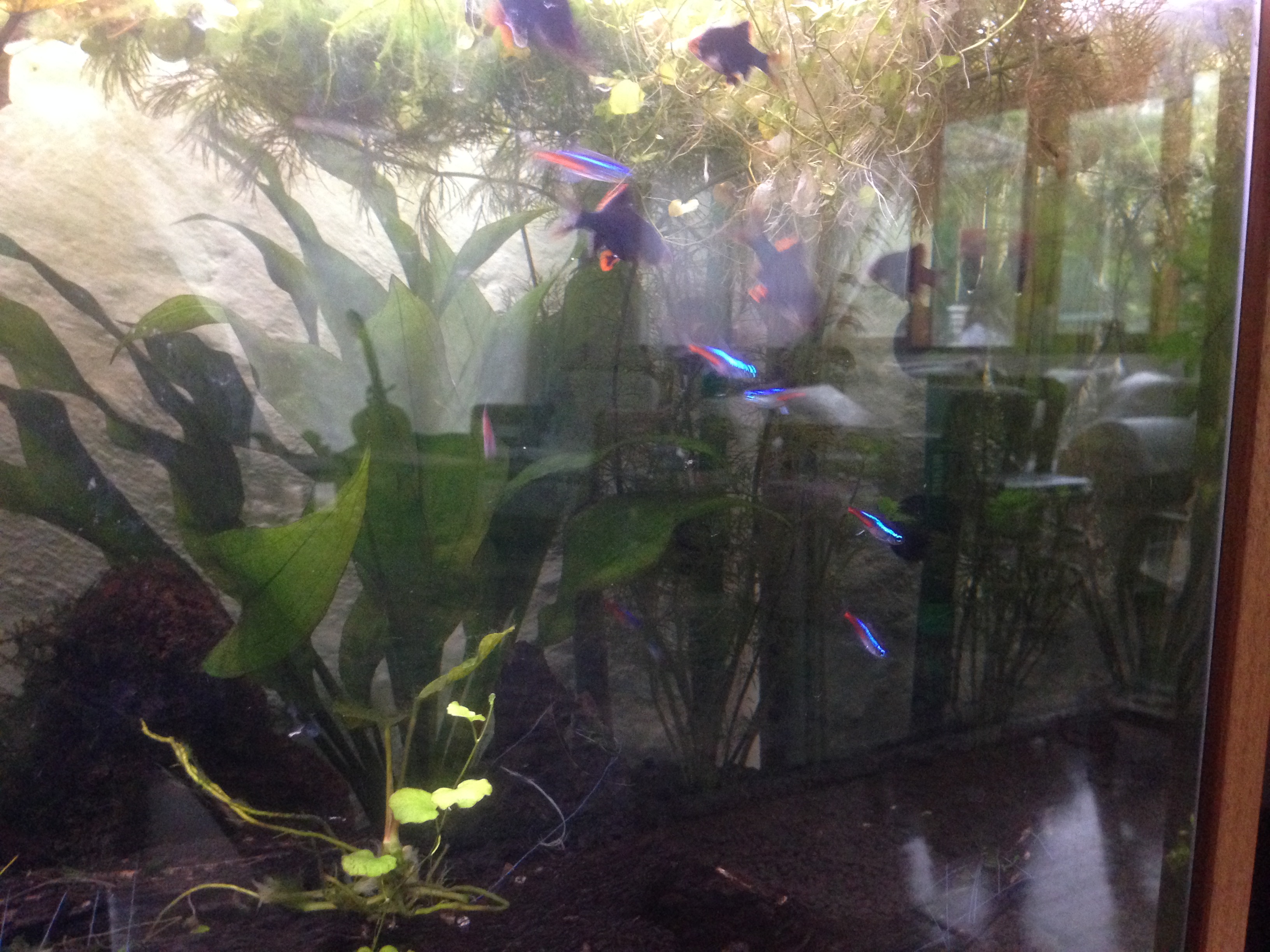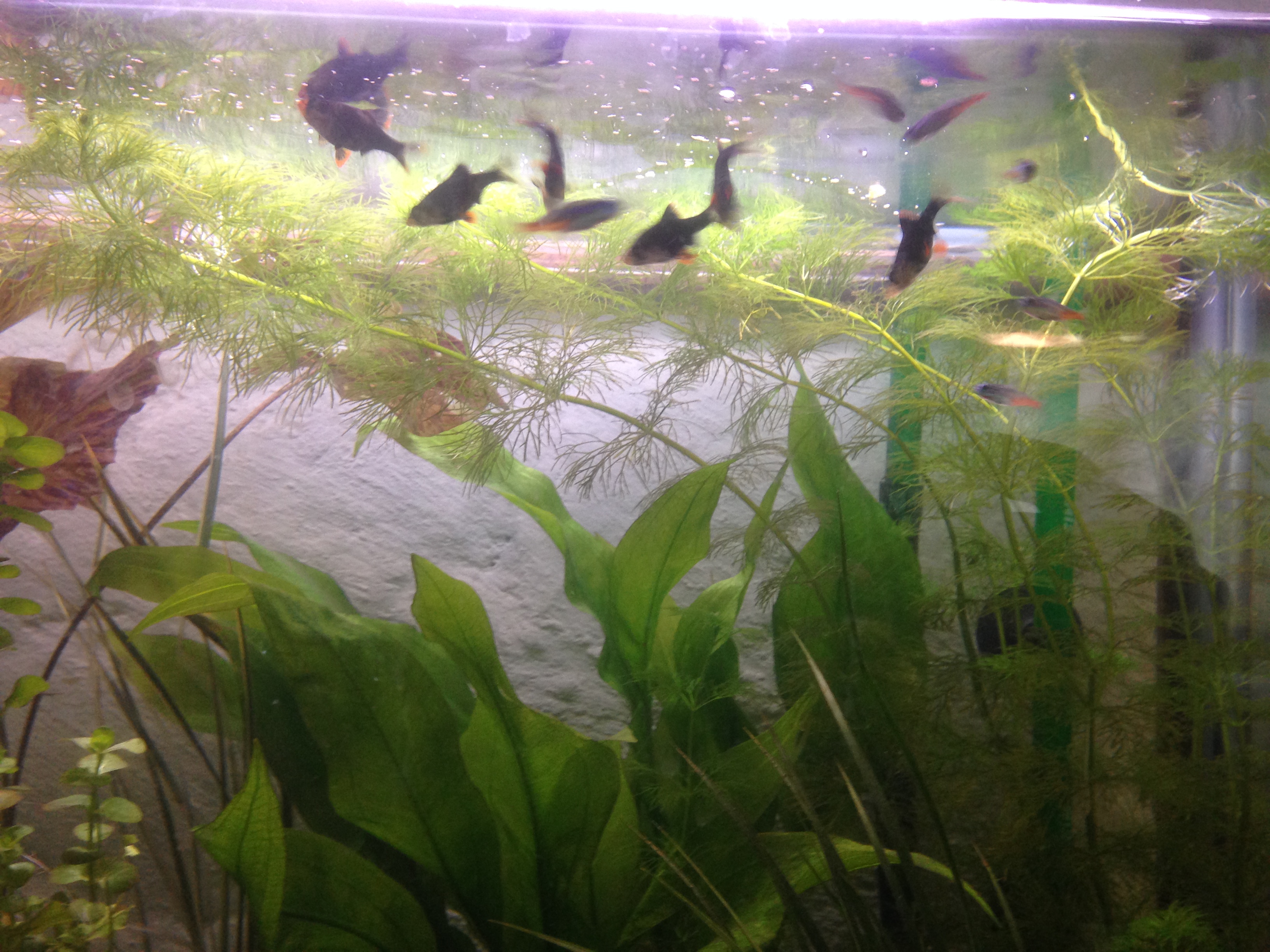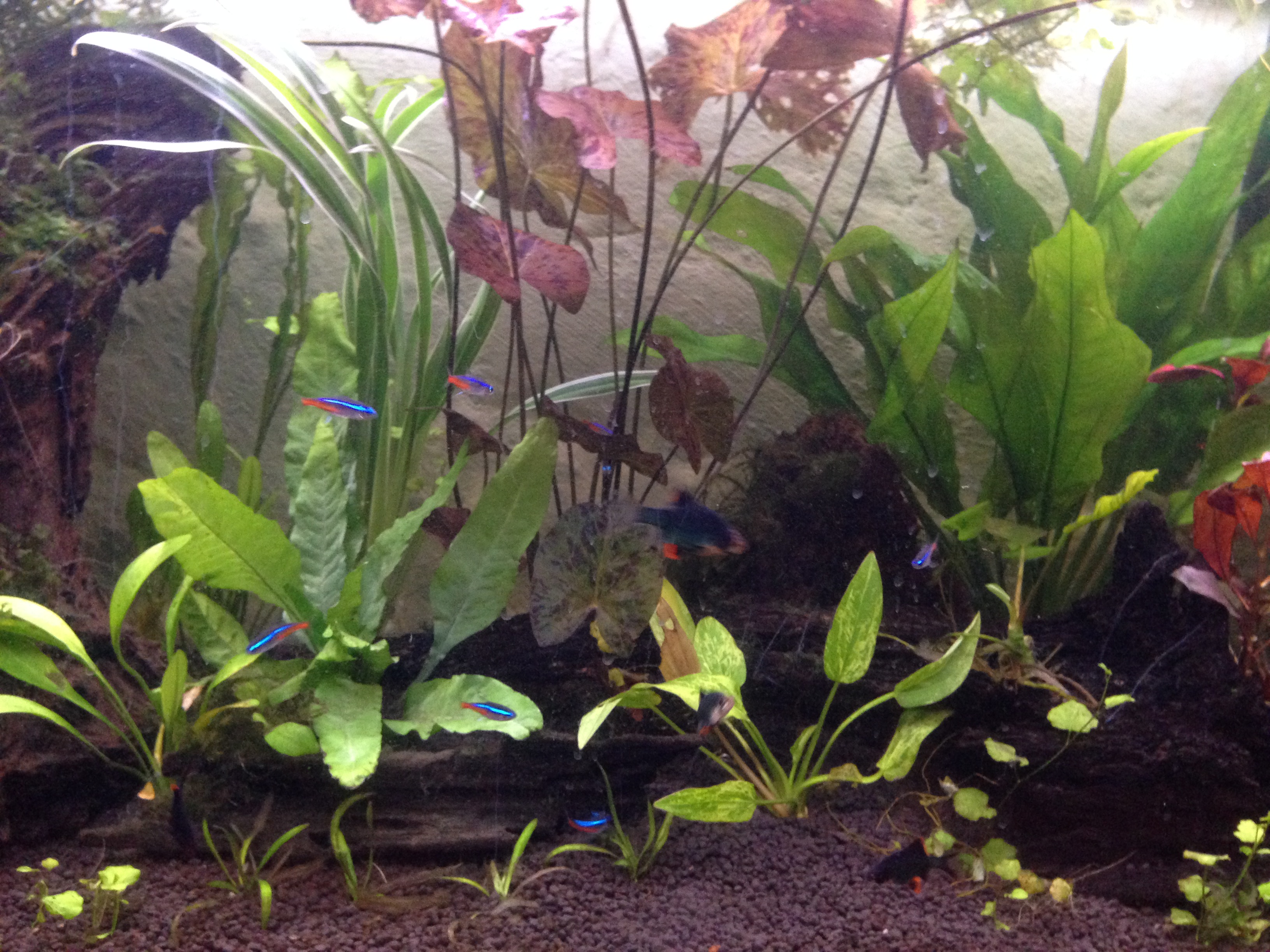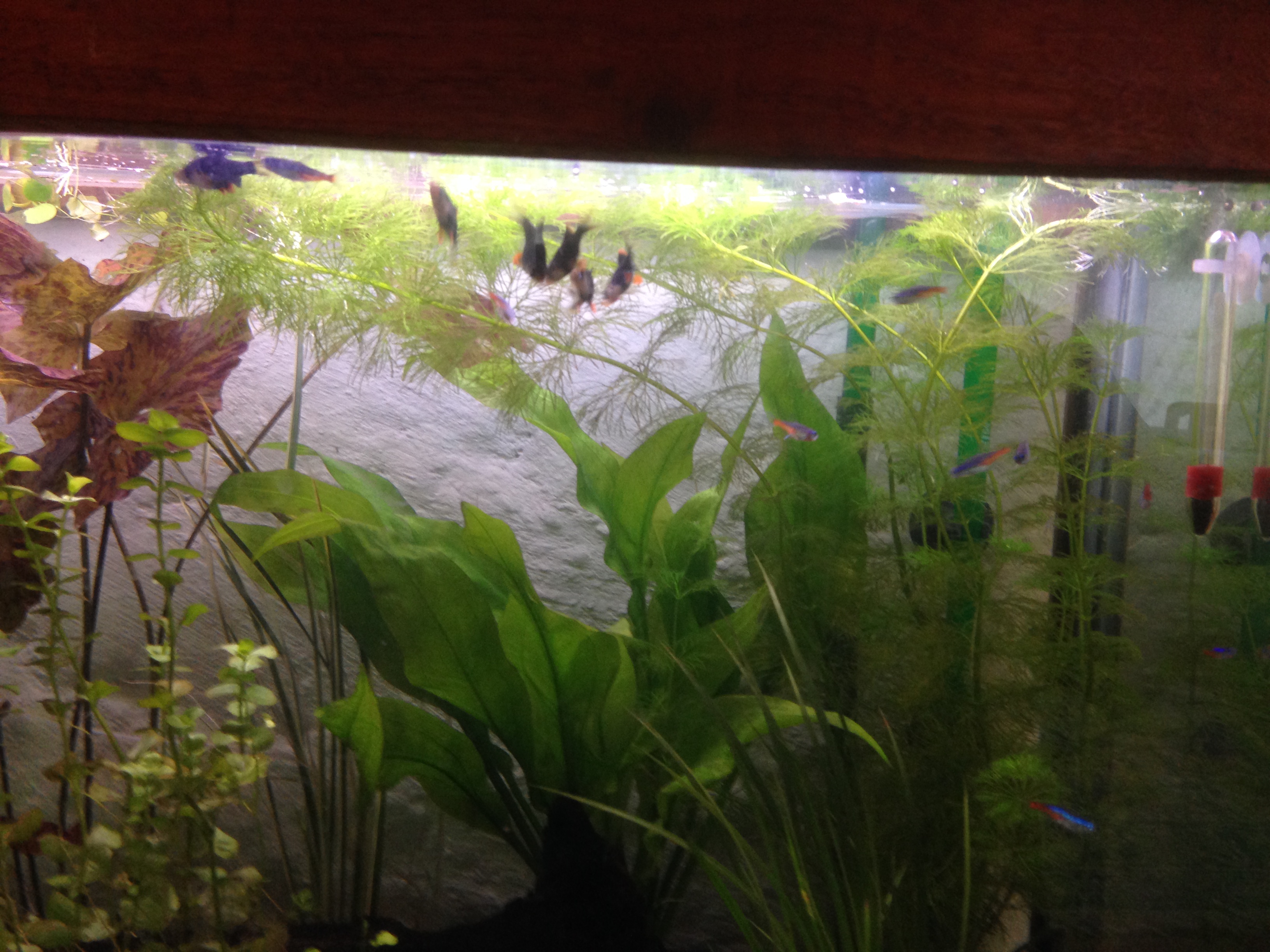A few months ago I had the idea to drag my old aquarium out of storage, it had been stored away after my original fish died from old age (6 years is not bad for a goldfish). The aquarium base had been a quick job that I had made out of scrap timber from an old packing crate. The timber was some nice tropical variety, so I had de-nailed it and run an electric planer over it to get it as square as possible. Due to my limited tooling at the time all I had was a handsaw to miter it all together with, so the joinery leaves a little to be desired. I decided to finish the job by building some doors and lid from the remaining packing crate timber and some old school desks.
The ballast and fitting for the light were borrowed from an old fluorescent lamp and the bulb purchased from a pet store as it needs to output light at a specific wavelength to promote plant growth (predominately reds and violets).
With the doors made I decided to panel them and the sides of the base with wicker as I had some put aside from a previous project.
In the meantime all the parts for my CO2 injector had arrived in the mail, the regulator, solenoid, needle valve, bubble counter and 1.5kg CO2 bottle. I decided to set it all up to check for leaks and operation. Two 9 liter bags of ADA Amazonia AquaSoil also arrived which I replaced the existing gravel in the tank with. I put a few teaspoons of osmocote down first then added the AquaSoil, 18 liters filled the bottom of the tank nicely with a shallow taper toward the front so as to build the illusion of perspective.
The Eheim 2213 canister filter and CO2 bottle sit on the floor and fit through holes cut in the base, this is necessary in order for everything to fit under the tank. I have also installed power points under the tank, the first two (heater and filter) being permanently connected to power while the second two (light and CO2) are driven by a 24 hour rotary timer so as to turn the CO2 off at night when no longer required by the plants. The canister filter is loaded with ceramic substrate sandwiched between two coarse foam sponges either end, its function in a planted tank is to convert ammonia into nitrates.
After filling the tank with water I realized that the ADA Amazonia left the water quite cloudy, even after 3 days of settling and a 1 micron filter being put over the outlet of the pump I was unable to clear the water. I opted to perform water changes, and after just one water change the water came up crystal clear. I planted the tank out lightly, added a thoroughly boiled piece of driftwood, then added some API Stress Zyme to the tank and let it sit for a few weeks while the ammonia converting bacteria colonized the filter and substrate. In Melbourne Australia the water is sometimes treated with chloramine which needs to be neutralized as it is quite toxic to fishes, thus a good water ager is essential. As a consequence the tap water might also show up as containing ammonia when tested at about 1ppm so don’t freak out, you’re not having an ammonia spike.
After letting the tank cycle for a few weeks and monitoring ammonia levels I ordered a whole bunch of live, rooted plants and chased down another piece of driftwood. Planting everything out is great fun, and tying anubias and moss to driftwood is a strangely satisfying experience. I then populated the tank with two little catfish, 12 neon tetras, 6 copper-green tiger barbs and one tiger barb, they all seemed to get along quite nicely with minimal conflict and aggression.
